Strawberries with neutral daylight hours: varieties and agricultural technology
Due to its popularity with strawberries gardeners are constantly experimenting, developing varieties suitable for climates with neutral daylight hours. For a culture of this type, the formation of inflorescences is characteristic, regardless of the length of the day. No wonder this strawberry is also called a re-fruiting plant or remontant. The harvest of berries can be obtained year-round by transferring the bushes to the greenhouse for the cold period.
The strawberry, which tastes good, is one of the earliest berries, which are savored already in mid-June. Breeders are presented with varieties of horticultural crops that give crops continuously. Budding, flowering in strawberries of neutral daylight occurs constantly. And if the conditions for the development of berry culture are also created in accordance with the rules of agricultural technology, then it will be possible to feast on the fruits throughout the entire growing season of the plant.
Content:
- Review of the best varieties
- Creation of conditions for growing berries
- Strawberry breeding and planting rules
- Recommendations for the care of the species
- Diseases and pests of strawberries, the fight against them
- Advantages and disadvantages of garden berries
Review of the best varieties
Many varieties strawberry came to us from Poland, America, as these countries are leaders in the cultivation of this berry. But our scientists also delight gardeners with new products.
The most common daylight-neutral strawberries include:
- The Everest hybrid produces berries in the first year of planting in late summer - early autumn, and then two waves of fruiting are noted in it: in late May and early August. The variety is distinguished by large, even fruits of bright red color with sweet and sour juicy pulp. And during all periods of fruiting, the berries do not shrink, remaining large. The crop tolerates transportation well, retaining an attractive appearance for a long time.
- Differs in long-term fruiting strawberries Queen Elizabeth II... The bushes are characterized by a small number of mustaches and rosettes. Round or conical berries have firm flesh, aromatic, sweet taste. The variety is protected from fungal diseases, it is demanding to provide moisture.
- The advantages of the Albion variety are considered resistance to root rot, dense pulp of elongated fruits. The color of the berries, both outside and inside, is bright red. You can use delicious strawberries for fresh consumption or processing into jams, marmalades, preserves. The plant bears fruit from the end of May until frost.
- In the Aromas variety, the berries are of medium size, dark red in color, airy pulp without voids. Ripening period of strawberries is early, but low-growing bushes are afraid of frost.
- Selva strawberries are recommended to grow in containers in a weeping form, as the plant can freeze out in the open field. Already in May, large berries of a dark red tone with dense pulp are harvested from the bushes. The variety is resistant to diseases affecting leaves and root system.
- Strawberries Lyubava are considered universal in use, which is suitable for the vertical growing method.The plant attracts the delicate aroma of conical berries, their amicable ripening, the ability to long-term storage. The variety has good winter hardiness, high drought and disease resistance.
All strawberry varieties of neutral daylight hours retain the appearance of the berry well during transportation, are resistant to fungal attack, but are afraid of a drop in temperature.
Creation of conditions for growing berries
A feature of growing strawberries with a neutral daylight hours is its undemandingness to illumination. The crop yield is not affected by a decrease in daytime hours towards the end of summer. The bushes will continue to pick up color and set fruit.
Many varieties of this type of berry are demanding on temperature conditions. When frost occurs, the bushes can freeze and finish their development. Planting them in containers that can be brought into the greenhouse during a cold snap will help to avoid this.
The fertility of the soil on which it will grow is important for garden strawberries.
She constantly needs nitrogen, potassium, phosphorus. Therefore, before planting, one square meter is introduced into the ground up to seven kilograms of rotted manure or one or two kilograms bird droppings... The best site for planting strawberries will be one where the soil has a loamy or sandy loam structure.
A plantation is prepared for spring plantings in the fall, and summer plantings in the spring. The site is well plowed to a depth of fifteen centimeters. It is necessary to pay attention so that no May beetle larvae are observed in the soil. Creating favorable conditions for growing strawberries with a neutral daylight will allow you to feast on fragrant berries all summer long.
Strawberry breeding and planting rules
You can propagate a berry culture in several ways:
- Using seeds for growing strawberries on a plot is a complex task that requires skill and time. Small plant seeds are scattered in containers, not covered with soil, but abundantly spilled with water. After that, it is necessary to cover the containers with foil or glass, airing daily and observing the moisture content of the earth. After the emergence of seedlings, the cover is removed, and as soon as the sprouts become stronger and reach the age of two weeks, they are transplanted into separate peat cups, and then into open ground.
- The most common breeding method for strawberries is to plant a formed whisker. Rosettes of leaves appear on these young twigs, which are rooted, separated from the mother plant. At the end of summer, seedlings can be transplanted to a permanent place.
- An easy way of reproduction is considered and division of the bush... In mature plants, several growth points usually appear. Carefully dividing the bush into several parts, leave one growth point on each, then plant it in a prepared place.
They choose a three-line method for planting strawberries, when the distance between the ribbons should be ninety centimeters, and between the lines and from each other - thirty. This will help the mustache then take up space to form more strawberry ribbons.
When planting bushes, you need to pay attention to the presence of a healthy central bud, a fibrous root system.
They are planted to a depth of ten centimeters so that the growing point is at the level of the soil. The earth is poured into the hole, pressing it to the roots, tamping well. The correct planting can be checked by pulling on the leaf of the plant. It should come off, and the rest should not budge.
Once all the plants are planted, they are well watered, and then the beds are mulched with straw, sawdust... Planting dates for strawberries may vary. It is better to do this in the second half of summer, then in September you can feast on berries. In the spring they are planted after April 15, for the first time covering the planting with a film. Competent planting and breeding of garden strawberries is a reliable guarantee of the future harvest.
Recommendations for the care of the species
During spring planting, it is important for strawberries watering four times during the growing season. Two to three buckets of water per square meter will suffice. The plant responds well to loosening the soil and weeding. After October 15, as soon as the top layer of the soil freezes, the berry bushes are covered with brushwood, straw, spruce branches, dry stems corn or tops potatoes, a tomato... The cover layer can be ten centimeters. But before the frost it is not necessary to cover it, otherwise the plant will begin to rot.
The shelter is cleaned in the spring, using it to equip smoke bombs, saving from severe spring frosts. During this period, it is necessary to remove dry mustaches from the bushes and burn them along with last year's foliage. This garbage is often the source of berry crop diseases.
They start feeding strawberries with neutral daylight hours as soon as they wake up.
Of the fertilizers, superphosphate and ammonium nitrate are useful, which are applied either in dry or liquid form. Dry dressings are embedded inside the soil with a hoe or shovel, or you can dissolve the substances in a bucket of water, taking ten and fifteen grams, respectively. The second time, just before the flowering of the bushes, they are watered with a solution mullein, made in a ratio of 1: 6, and poultry droppings - 1:20. You can replace organic matter with potassium salt and ammonium nitrate, taken ten grams each. During the growing season, strawberries are fed up to ten times. Berry culture requires competent care, special attention from the gardener.
Diseases and pests of strawberries, the fight against them
As Strawberry loves high humidity, it is often affected by fungi that actively develop in a humid environment. The most common diseases include powdery mildew, gray rot, late blight wilting (these types of diseases are especially dangerous when buds or berries appear):
- Dirty gray bloom on leaves and stems leads to the death of the green parts of the plant, and then to its death. Therefore, it is necessary to spray the bushes with a solution prepared from 20 grams of soap and copper sulfate in a bucket of water to prevent powdery mildew. Drugs like Topaz.
- Gray rot affects the berries, which become moldy, deformed, and lose their taste. Because of the disease, the entire berry crop sometimes perishes. Bordeaux mixture can prevent illness.
- If the leaves begin to fade, acquiring a grayish tint, then this is a late blight fungal infection, which often destroys the entire berry plantation in several years. Salvation is only in the preliminary treatment of plant roots with Agate.
Of the pests of strawberry plantings, the following are often found:
- The strawberry mite is difficult to see, but it does a lot of damage to the leaves. They shrink and die. The destruction of the pest must take place quickly, otherwise it will fill the entire strawberry plantation. Spraying with a solution of colloidal sulfur twice in the summer will save the crop.
- The weevil beetle actively gnaws at the foliage, and the larvae eat the buds. Spraying with Decis, Spark will defeat the parasite.
- They love to feast on the plant and its fruits, centipedes, slugs, snails. They effectively fight them with a metaldehyde preparation, which is scattered over the beds.
- It is difficult to get rid of the spider mite, which has chosen delicious bushes. An effective way to deal with it is the treatment of karbofos (3 tablespoons per bucket of water). The sprinkling procedure is carried out after picking the berries. For the best effect of the planting agent, it is better to cover it with a film for three hours after processing. Will save from the pest and mowing leaves after August 10, followed by their burning.
Taking care of the berry bushes throughout the summer will turn into a delicious treat for the whole family.
Advantages and disadvantages of garden berries
The positive features of neutral daylight strawberry varieties include:
- Continuous bud formation and fruiting from May to October provides a stable yield of delicious berries.
- The short period of transition from peduncles to ripening of berries does not reduce the taste of the fruits, their aroma, and benefits.
- High yields are combined with resistance to common diseases and pests of the crop.
- In addition to the main rosettes, strawberries also appear on young, not even rooted ones. Therefore, many gardeners plant neutrals in containers, letting the mustache with rosettes hang down freely.
- If the newly planted bushes are not allowed to bear fruit in the fall, then the next year they will give high yields of fruits.
Strawberries of the new species have no particular drawbacks. The only thing is that she is afraid of frost, so this must be carefully monitored. Otherwise, the death of the plant cannot be avoided.
Strawberry bushes age quickly, so after two years it is better to renew the plantation with young plantings. Production of new species strawberry makes it possible to lengthen the amount of time for eating delicious berries.
More information can be found in the video:




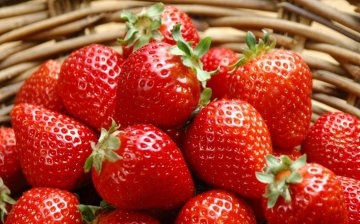
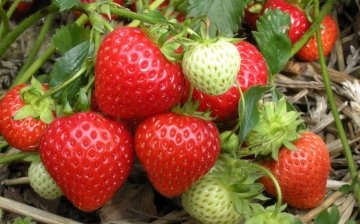
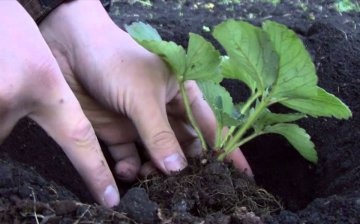
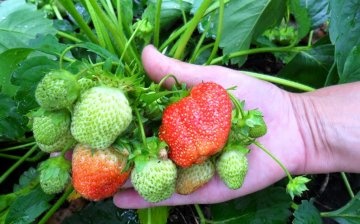
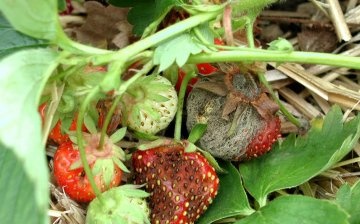
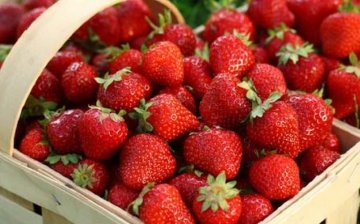







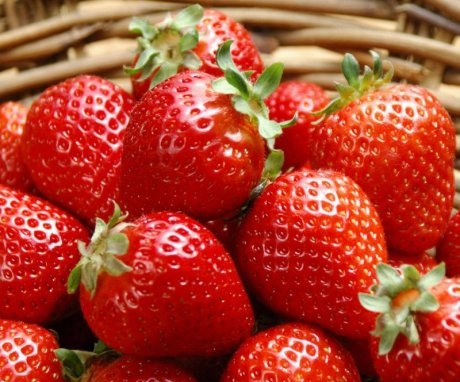
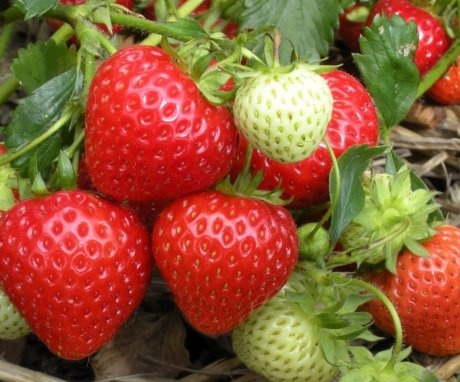
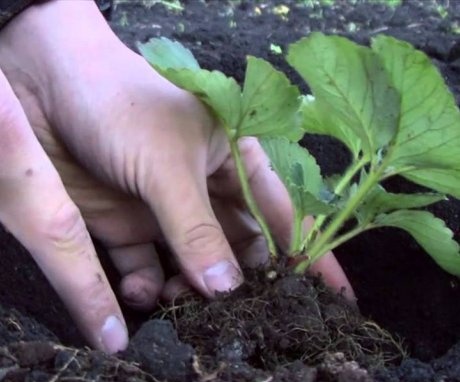
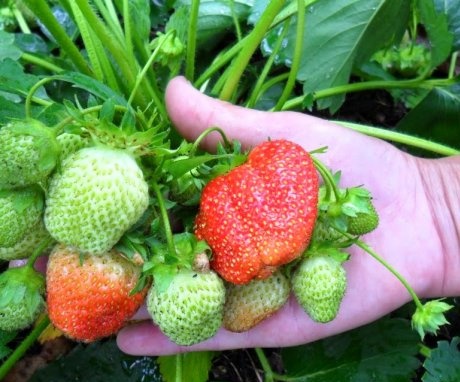
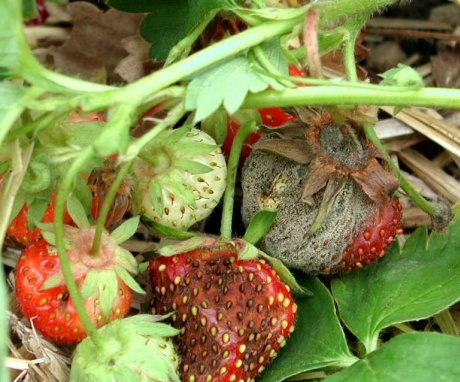

We have a common strawberry in the garden and it bears fruit from the second half of May to mid-June. We were advised to mow the bushes in August, so that, supposedly, after that, the strawberries will grow better. In this article, I have not found such a method.
Now the climate is changing, so the summer can be extremely hot in almost any region of our country. And I am not sure that such strawberry varieties are able to withstand the summer heat well.